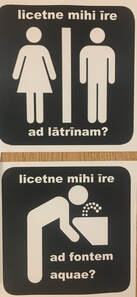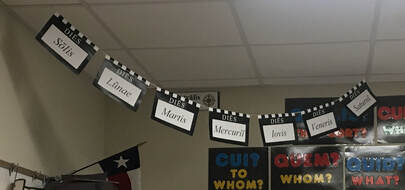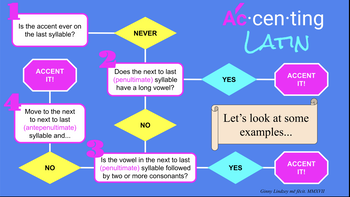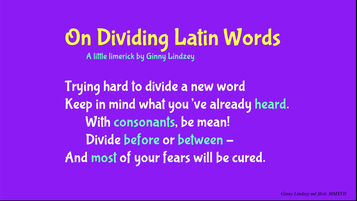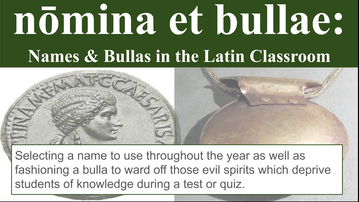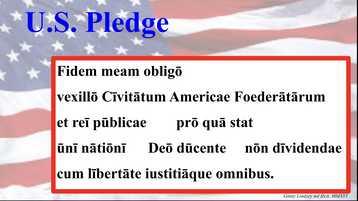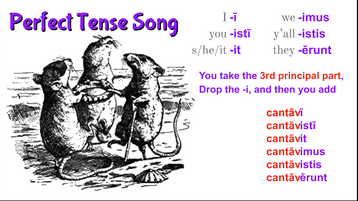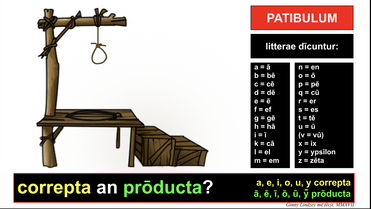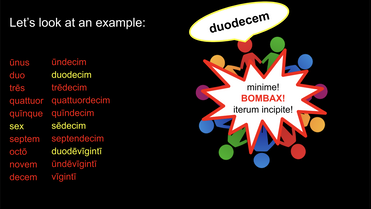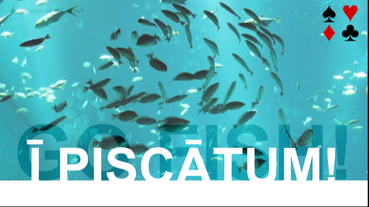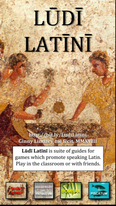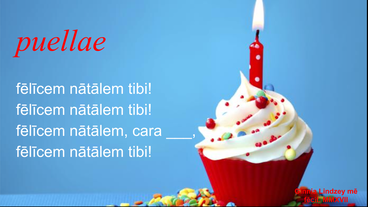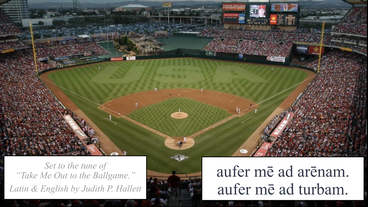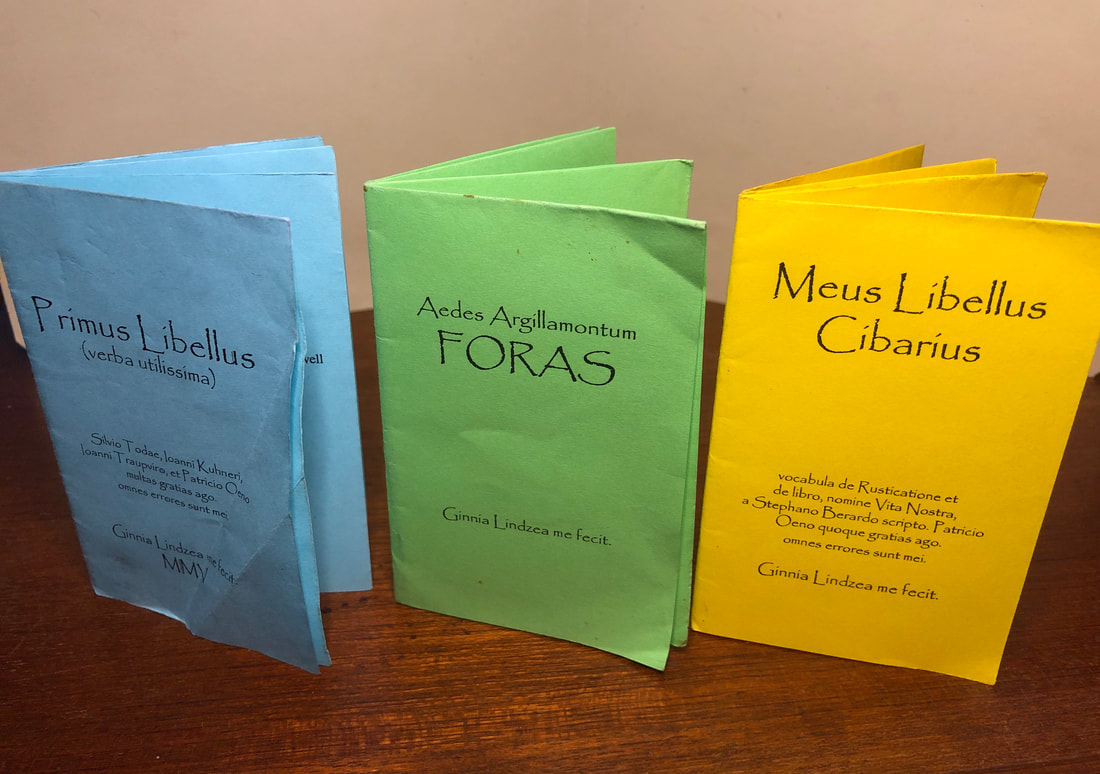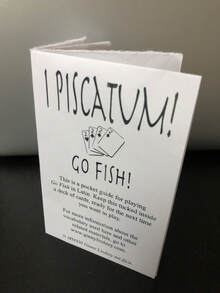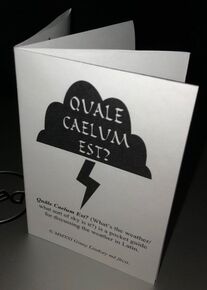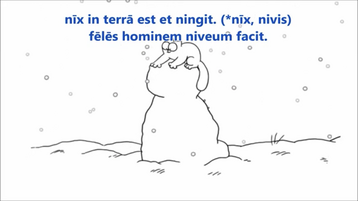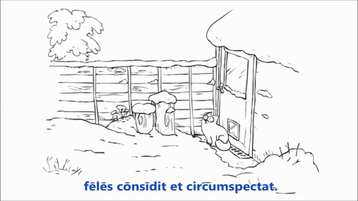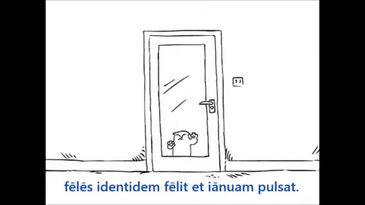signs for your classroom
|
Instructional materials
|
games
|
Songs
|
mini-booklets (Go HERE to learn how to fold)
|
Latin Simon's Cat Videos
|
In 2015 I experimented with adding Latin subtitles to short Simon's Cat cartoons to use for a movie talk. Of course, a movie talk is probably better if you don't have any text and students need to just listen to you and watch. I've recently added them to a new YouTube channel (since I can't access my old school one!). And don't ask me what program I used to add captions; I honestly don't remember!
|
Articles
I will be going through files and searching links for articles that I have written. I will also start reposting some articles from my old blog to my new blog located on this site.
- “The Biduum Experience: Speaking Latin to Learn Latin” published in Teaching Classical Languages Spring 2015 (REFEREED).
- “Principles of Learning in a Middle School Latin Classroom” published in CAMWS/CJ 2006 (REFEREED)
- “A Ghost's Tale: Musings on the Film Scenario.” Texas Classics in Action, Summer 1998. Reprinted in The Classical Outlook, Volume 76, Number 4. Summer 1999. (REFEREED)
- “Lindsey Davis: An Interview with the Author of Silver Pigs.” Texas Classics in Action, Winter 1993. Reprinted in Mysterious Women, Winter 1996.
PRESENTATIONS
- 2023 Merlin Bird ID. Google Slides presentation on how to use the Merlin Bird ID app at Wild Birds Unlimited Austin South (August 25, 2023)
- 2021 ETC Live presentation: I Piscatum: Go Fish (broadcast date December 9, 2021)
Additional Materials (PDF files):
I Piscatum Booklet
I Piscatum Name Plate
Interjections Handout - 2021Texas Classical Association fall conference at Austin College in Sherman, TX: Chartīs Lūdāmus: Playing Cards in Latin in the 1500s and Now (Google Slides) (November 6, 2021)
Additional Materials (PDF files):
Latin: Ludus Chartarum (Vives Text)
English: Tudor School-Boy Life (translation of Vives)
I Piscatum Booklet
I Piscatum Name Plate - Multi-state Junior Classical League Convention (North Carolina, Pennsylvania, New Jersey, & Maryland): Dead Voices Speak: Inscriptions & Graffiti from the Ancient World (revised & improved Google Slides). (April 25, 2021)
- Names & Bullas in the Latin Classroom, Excellence Through Classics / ETC Live, (Dec 2, 2020).
- Iowa University, Department of Classics, ETA SIGMA PHI "The Little Things" Lecture series, Fall 2020 (Sept 2, 2020): Dead Voices Speak: Inscriptions & Graffiti from the Ancient World. (YouTube from Zoom conference)
- CAMWS-SS & TCA: “The Time-Travel Passport: Promoting Spoken Latin in a Reading-Based Classroom” (Oct. 2018 & Nov. 2018)
PAPER * GOOGLE SLIDES [NB Many of the videos of students were not retained when I shifted my files from the school server. me paenitet.] - ACL: “Recapturing the Joy of Reading Latin” (June 2016) (Joint presentation with Caroline Kelly)
GOOGLE SLIDES (slides 1-19 were my part) * MAIN HANDOUT * PREASSESSMENT QUESTIONS * READING WITH EXPECTATIONS HANDOUT * OFFPRINT OF "RESOLVING AMBIGUOUS FORMS IN LATIN" - TCA: “What’s in Your Latin Toolbox? Developing Reading Skills” (Fall 2013)
PAPER AND HANDOUT - Austin College Summer Language Institute: “Building Solid Reading Skills” (Summer 2013)
HANDOUT - TFLA: “From Caecilius to Caesar: Building Reading Skills in the Latin Classroom” (Fall 2012) [NB This paper was just a revision of following paper.]
PAPER * HANDOUT - CAMWS: “From Caecilius to Aeneas: Thoughts on Growing a Successful Latin Program Using the Cambridge Latin Course” (2010)
PAPER AND HANDOUT
